L'elenco delle risorse proposto è una raccolta di letture scelte che possono offrire informazioni complementari per i visitatori del nostro sito. E’ da intendersi esclusivamente come una guida informativa senza alcuna finalità terapeutica, diagnostica, medica o legale (fare riferimento alla dichiarazione di non responsabilità all’interno del Linking policy).
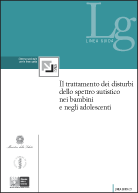
Linee Guida Autismo 2011
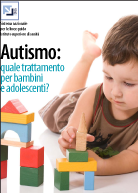
Linee Guida Autismo per pubblico
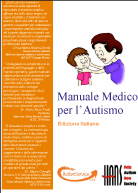
Manuale Medico per l'Autismo
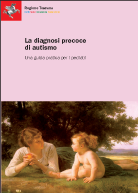
Diagnosi Precoce Autismo
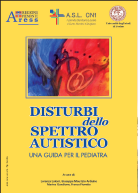
Linee Guida Pediatri Autismo
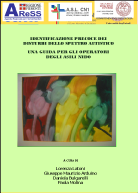
Linee Guida Operatori asili nido
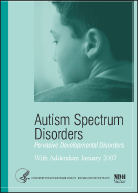
Autism Spectrum Disorders (with addendum)
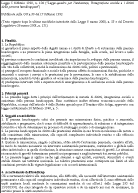
Legge 104 - Integrazione
Sociale Disabili
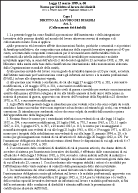
Legge 68 - Diritto
Lavoro Disabili
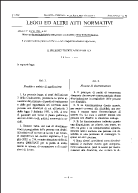
Legge 67 - Pari
Opportunità Disabili
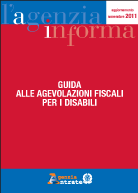
Agevolazione Fiscale
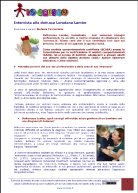
Intervista alla
dott.ssa L.Lembo
AAC: Augmentative and Alternative Communication
AAC: Any form of non-verbal language or differential communication in individuals who have little or no vocal ability. AAC methods include use of manual, visual communication and communication devises.
ABA: Applied Behavior Analysis
ABC chart: Antecedent Behavior Consequence chart identifies conditions that precede and follow problem behaviour. ABC analyses may take a number of different forms, often involving study of behaviour using direct observation.
ABLLS: Assessment of Basic Language and Learning Skills
ADD: Attention Deficit Disorder
ADHD: Attention Deficit Hyperactivity Disorder is characterized by patterns of inattentive and/or hyperactive-impulsive behaviour that is not typical for the average person at that developmental level
ADI: Autism Diagnostic Interview
ADOS: Autism Diagnostic Observation Scale
AFLS: Assessment of Functional Living Skills
AIT: Auditory Integration Training
AS: Asperger's Syndrome; developmental disorder on the autism spectrum defined by impairments in communication and social development, and by narrow interests and repetitive behaviours. Unlike individuals with typical autism, individuals with Asperger's Syndrome have no significant delay in language or cognitive development.
AT: Assistive Technology; a wide range of highly specialised mechanical, electronic and computer-based tools commonly used in rehabilitation and special education settings.
ASD: is a complex developmental disability that causes problems with social interaction and communication. Symptoms usually start before age three and can cause delays or problems in many different skills that develop from infancy to adulthood.
ASL: American Sign Language
A-Typical Autism: A pervasive developmental disorder that differs from classic autism in terms either of age of onset or of failure to fulfil all three sets of diagnostic criteria.
Angelman Syndrome: A severe genetic disorder and developmental delay characterised by lack of or minimal speech with relatively higher communication skills; movement or balance disorder and atypical verbal behaviour such as excitability, hand flapping and short attention span. Individuals with Angelman syndrome are sometimes misdiagnosed as having autism, cerebral palsy or other developmental disorders.
BIP: Behavioral Intervention Plan
BSL: British Sign Language
CARS - 2: Childhood Autism Rating Scale Second Edition
CBT: Cognitive Behavior Therapy; is a therapy used to treat depression, anxiety disorders, phobias and other forms of mental disorder. It involves recognising unhelpful or destructive patterns of thinking and reacting, then modifying or replacing these with more realistic or helpful ones.
CCC/SLP: Clinical Competence Certification for Speech Language Pathology/Speech Language Pathologist
CD: Communication Disorder; a disruption in the process of exchanging information and conveying ideas. Disruption can affect language, speech, fluency, voice production and reception.
CDC: Centers for Disease Control
CDD: Childhood Disintegrative Disorder; typically onset is between 3 and 4 and may be gradual or abrupt. Early signs include increased motor activity, irritability, and anxiety, followed by intellectual impairment and gradual withdrawal from communication and other social interactions, including loss of previously acquired skills. Developmental delay may be mild for an extended period, followed by continued decline. As with autism, CDD is more common among boys than girls.
CHAT: Checklist for Autism in Toddlers
CoP: Practical advice/guidelines on a particular topic which organisations and establishments should adhere to (for example – guidelines on the provision of services for people with additional support needs)
DAN: Defeat Autism Now is an approach which starts with the idea that autism is a biomedical disorder and that autism is a disorder caused by a combination of lowered immune response, external toxins from vaccines and other sources, and problems caused by certain foods.
DIR/Floortime: Developmental, Individual-Difference, Relationship-Based model
DSM: Diagnostic and Statistical Manual of Mental Disorders.
DTT: Discrete Trial Teaching
EEG: Electroencephalogram
EI: Early Intervention
FA: Functional Analysis; type of analysis dealing with looking at the functions of behaviour.
FC: Facilitated Communication; communication method in which a child’s hand is supported by a facilitator to type out messages on a keyboard or other communication device. Occasionally the support is as minimal as touching the child’s elbow or shoulder.
HELP: Hawaii Early Learning Profile is an assessment tool for 0 to 3 years
HFA: High-functioning Autistic
ICD: International Classification of Diseases
IEP: Individualized Education Plan
IFSP: Individualized Family Service Plan
IPP: Individual Program Plan
ILP: Individual Learning Plan
LD: Learning Difficulties
LFA: Low Functioning Autism
MLD: Moderate Learning Difficulties
MRI: Magnetic Resonance Imaging
NET: Natural Environment Teaching
NT: Neurologically Typical or Neurotypical; refers to anyone not on the autistic spectrum and who is considered to have a more typical brain structure
OCD: Obsessive Compulsive Disorder; Recurrent obsessions and/or compulsions that are time consuming and that cause an individual marked distress and/or significant impairment in social and occupational functioning.
OT: Occupational Therapist
PDD: Pervasive Developmental Disorder; is not in itself a disorder but an umbrella
term to describe a group or a spectrum of specific disorders characterised by
pervasive and significant impairments in the development of social and communication functioning and in the development of normal patterns of behaviours or a range of interests. The disorders include autism, Rett disorder, childhood disintegrative disorder (CDD), Asperger syndrome (AS), and pervasive developmental disorder-not otherwise specified (PDD-NOS).
PDD-NOS: Pervasive Developmental Disorder Not Otherwise Specified
PECS: Picture Exchange Communication System
PEP-3: Psycho-educational Profile Third Edition
PRT: Pivotal Response Training
PT: Physical Therapy
RDI: Relationship Development Intervention; is a parent-based clinical treatment that addresses the core social problems of autism, such as friendship skills, empathy and the desire to share personal experiences with others.
RETT Syndrome: is a genetic and neurological condition which affects girls. Although signs may not be initially obvious, it is present at birth. It usually becomes more evident during the second year. People with Rett syndrome are almost always profoundly and multiply disabled and totally dependent on others for all their needs throughout their lives but severity may vary considerably.
SC: Social Cognition
SIT: Sensory Integration Therapy involves the gentle exposure to various sensory stimuli. The aim of this therapy is to strengthen, balance and develop the central nervous systems processing of sensory stimuli.
SIB: Self-Injurious Behavior
SGD: Speech Generating Device
SLD: Severe Learning difficulties
SLT: Speech and Language Therapists
SLP: Speech and Language Pathologist
SPD: Sensory Processing Disorder also known as Sensory Integration Dysfunction
TTAP: TEACCH Transition Assessment Profile specific for adolescent and young adults
TEACCH: Treatment and Education of Autistic and Related Communication Handicapped Children
Tourette Syndrome: also called Gilles de la Tourette syndrome is a neurological disorder characterized by multiple facial and other body tics, usually beginning in childhood or adolescence and often accompanied by grunts and compulsive utterances, as of interjections and obscenities..
VB: Verbal Behavior
VB-MAPP: Verbal Behavior Milestones Assessment and Placement Program
VOCA: Voice Output Communication Aid
WISC: Weschlers Intelligence Scale for Children
WHO: World Health Organisation
WH Questions: Questions starting with What, Who, Where, Why, and When